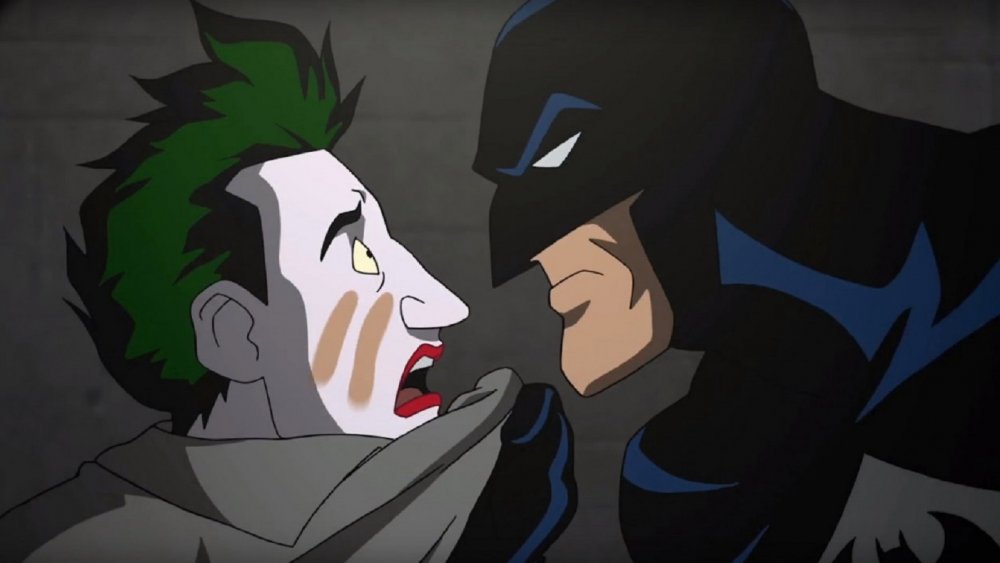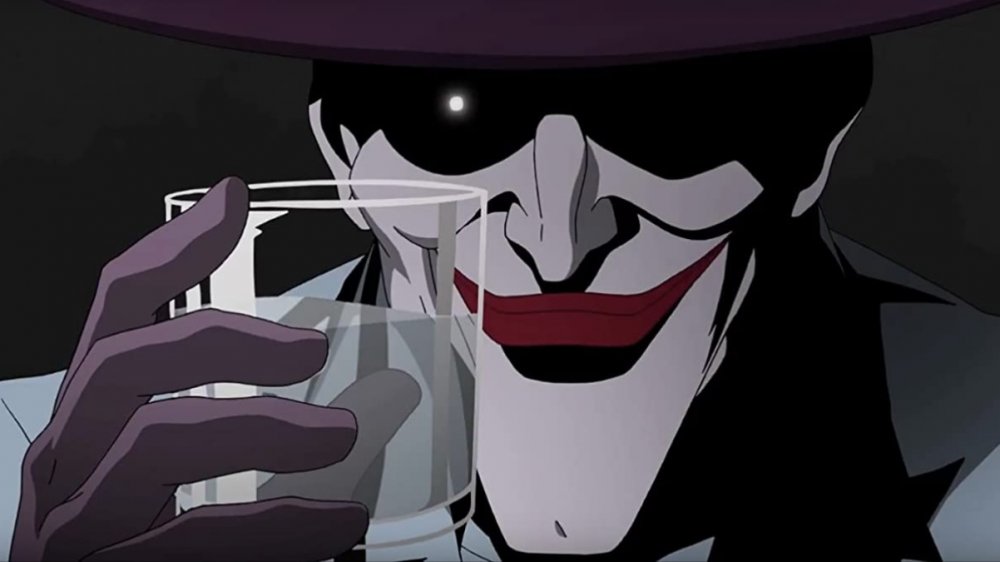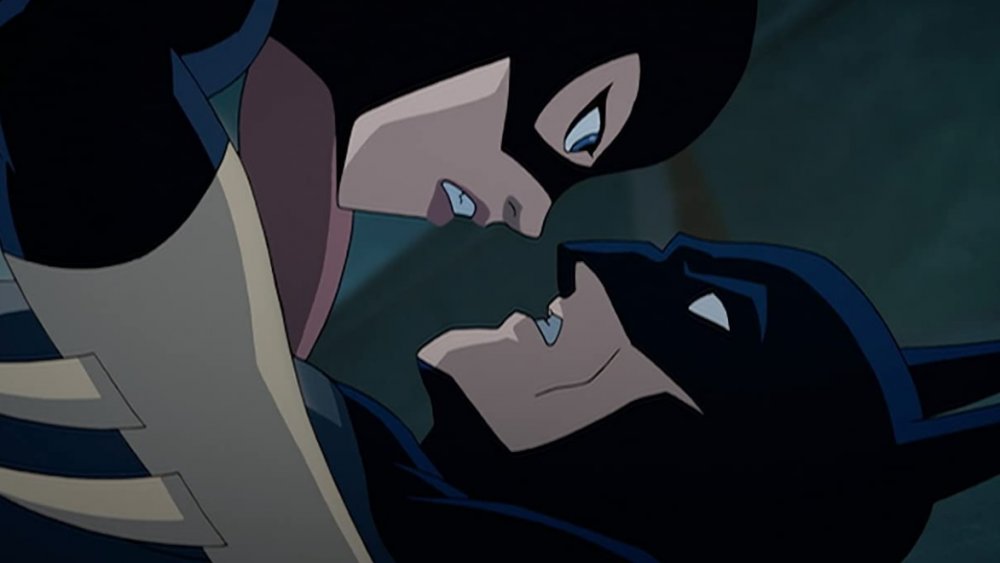The Controversial Batman Movie That's Dominating Netflix
Strap in, Bat-fans: The Killing Joke is killing it on Netflix.
Based on Alan Moore's iconic 1988 graphic novel of the same name, the flick is a singular one in the entire Bat-canon: It's the only film featuring the Dark Knight (so far) to receive an R rating from the MPAA. It contains themes and situations that are decidedly adult in nature, being a (mostly) note-perfect adaptation of Moore's work — a work the famously mercurial author himself has disowned for being too violent.
Controversy aside, the film's pedigree is nothing short of sterling. It was co-produced by Bruce Timm, best-known as the co-creator of the universally acclaimed Batman: The Animated Series, and directed by Sam Liu, who has helmed a slew of DC animated features that includes Superman/Batman: Public Enemies, Justice League vs. Teen Titans, and Wonder Woman: Bloodlines. Reprising their Batman: TAS roles are a pair of legends: Kevin Conroy as the Caped Crusader, and Mark Hamill as the Joker. The supporting cast is also packed with voice acting luminaries including Tara Strong, John DiMaggio, Robin Atkin Downes, and Nolan North, all of whom have far too many credits to even begin to list here.
Moore's novel had a towering influence on the way Batman and the Joker have been portrayed since its publication, especially in the case of the latter, whose ambiguous past and philosophy that it only takes "one bad day" for any average person to be driven to insanity originated with The Killing Joke. While the movie is generally faithful to the book, its most significant addition — a prologue that explores the complicated relationship between Bruce Wayne and Barbara Gordon, A.K.A. Batgirl — is the source of a great deal of the controversy surrounding it.
What is The Killing Joke about?
In that prologue, Batman attempts to dissuade Batgirl from a case she's been pursuing, fearing that on her current path, she'll one day cross the one line that Bats insists must never be crossed: Killing the criminals that she pursues. An angered Batgirl attacks Batman, but in the heat of the fight, the encounter turns into (there's no way to put this delicately) a sexual one.
From there, Batman: The Killing Joke follows the plot of Moore's novel more or less to the letter. Batman pays a visit to Arkham Asylum to question the Joker about a recent murder, only to find that the criminal has escaped, leaving a double in his place. The Joker turns his sights on Commissioner Jim Gordon and his daughter Barbara, shooting the latter in the stomach and leaving her paralyzed. He brings the Commissioner to an abandoned amusement park, where he attempts to break Gordon's psyche by bombarding him with images of Barbara, nude and bleeding on her apartment floor after the Joker's assault (This main story is intercut with vignettes from the Joker's supposed origin as a failed comedian whose run-in with Batman during a botched robbery leads to the creation of his criminal persona).
Batman comes to the rescue of Gordon, whose sanity is still intact, and the Joker retreats to the park's funhouse. Batman follows, leading to a confrontation in which the two enemies seem to discover what might appear obvious to any reasonable observer: They are opposite sides of the same coin, and in his own way, Batman is just as unstable as his cackling, insane nemesis.
The Killing Joke is controversial for several reasons
As previously mentioned, the prologue of Batman: The Killing Joke's animated adaptation generated an enormous amount of controversy upon the flick's 2016 release, for reasons that should now be obvious. In an interview with Vulture that year, Timm defended the decision of the filmmakers to make the relationship between Batman and Batgirl a sexual one, a development that has no precedent in the comics.
"It came from a three-way conversation between [co-producer] Alan Burnett, [screenwriter] Brian Azzarello, and myself," Timm said. "I don't remember who initially came up with the idea, but we all kind of jumped on it all at the same time and said, 'Yeah, that's kind of where we need to go '... We were aware that it's a little risky. There's definitely some stuff in that first part of the movie that's going to be controversial."
That wasn't the only, er, interesting choice made by the flick's creative minds, who deigned to give a minor character a throwaway line about the Joker's fondness for prostitutes, which seems just a bit out of character for the Clown Prince of Crime. Add to these things the fact that Moore's comic didn't give Barbara Gordon a great deal of agency in the first place, and the disturbingly sexual nature of the Joker's attack on her, and you have a recipe for a viewing experience that one could argue is just a touch extreme for an animated Batman movie.
For all the controversy, though, Batman: The Killing Joke is still, at least after its first half hour, an incredibly faithful retelling of one of the best Batman stories ever written, elevated by the voice talents of Conroy and Hamill, two of the greatest actors to ever play their respective roles. If that sounds like your cup of tea, then you should probably head on over to Netflix, where the flick is available to stream right now.


